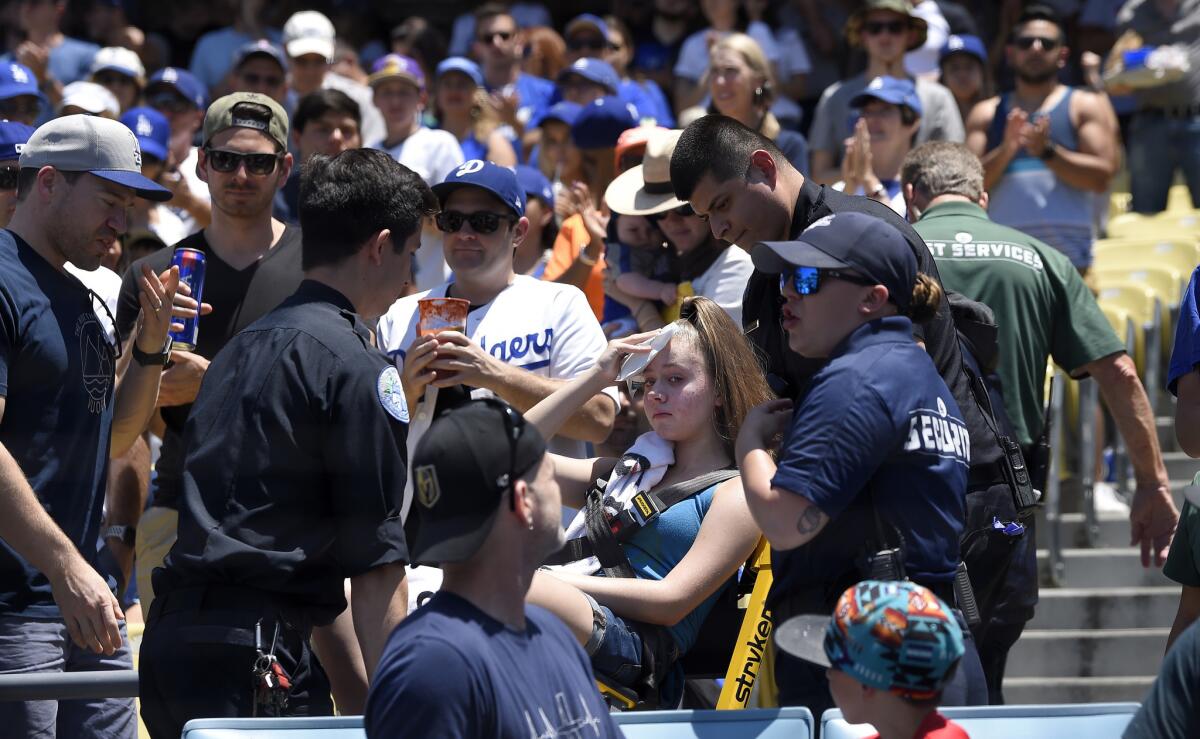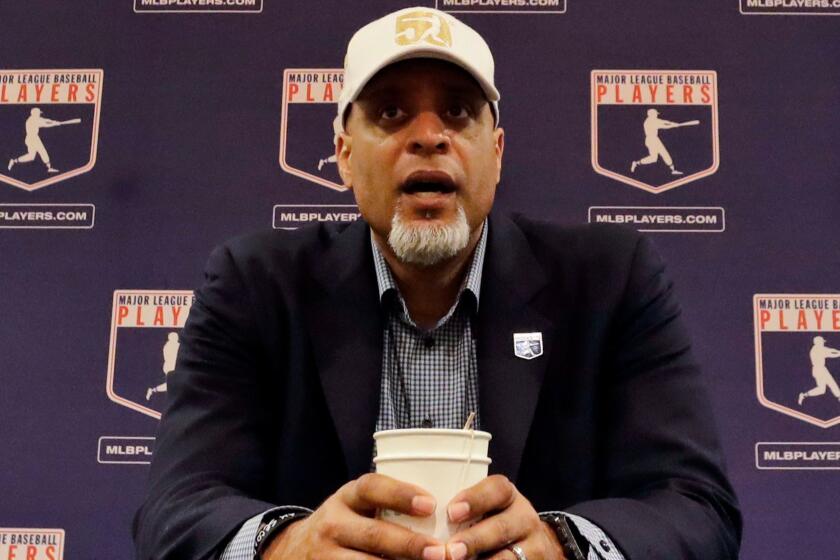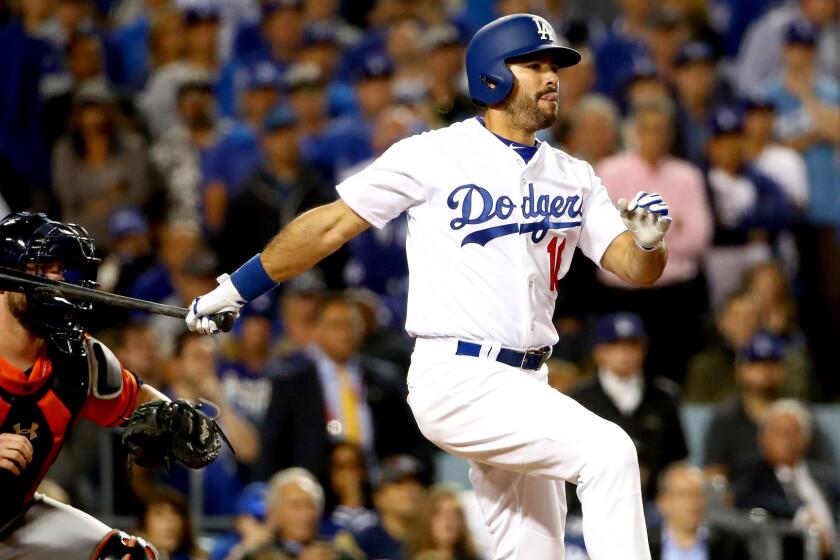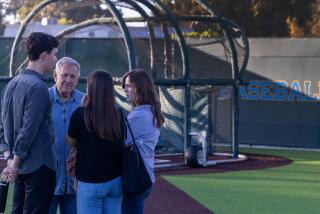A lawsuit could make baseball teams liable for foul balls that injure fans

Summer Johnson was 12 when the foul ball smashed into her face. She had come from Georgia to Long Beach to watch her big brother compete for a spot on a team representing the United States, and she left with a damaged eye. She can no longer see out of that eye.
Here is what the law traditionally has said about such incidents: Too bad.
However, a California appellate court ruling this week jeopardized a legal doctrine cherished by the baseball industry. The court did not defer to the so-called Baseball Rule, under which fans are expected to understand and assume the risk of injury from a screaming line drive, or from the jagged fragment of a broken bat.
“This is one of the few courts that hasn’t said, ‘No, this has always been the rule, the teams don’t have any liability,’ ” said Nathaniel Grow, an Indiana University law professor who has written about the Baseball Rule. “They’re actually going to reinterpret and rethink that, and potentially change the law in this area. That makes it significant.”
Even with the shield from liability, major league teams have expanded protective netting in recent seasons, in response to a series of horrific injuries and a fan death at Dodger Stadium. Now, the appellate court ruled, that netting might provide a basis for modifying the doctrine that teams assume no responsibility for fan injury.
MLB players union chief Tony Clark says victims of the Astros’ sign stealing want limits on video. Meanwhile, the rights of Astros players must be considered.
The century-old doctrine demands only that teams protect the most vulnerable fans, generally those directly behind home plate. A 1929 New York ruling that said a fan accepts at his or her own risk “the chance of contact with the ball.”
Johnson filed a lawsuit in 2014, alleging negligence in failing to warn her of the dangers of a foul ball or provide her reasonable protection from one. She was not seated behind home plate.
In 2017, Los Angeles County Superior Court Judge Ross Klein threw out Johnson’s case, citing in part a 1997 state appellate court ruling that acknowledged foul balls could cause injury to fans.
“If such foul balls were to be eliminated, it would be impossible to play the game,” the 1997 ruling read. “Thus, foul balls represent an inherent risk to spectators attending baseball games.”
Johnson appealed. Her argument that USA Baseball, the organizer of the event at Blair Field, should have offered clearer warnings and more netting, might or might not succeed. But a three-judge panel unanimously ruled that she should have the chance to make her case and ordered Klein to let her try.
The judges cited what they called “the modern, practical view of the importance of protective netting,” noting that all major league teams and many minor league teams have added netting without altering the nature of the game.
Andre Ethier’s 12-year Dodgers career ended with the 2017 World Series Game 7 loss to the Houston Astros. He says the emphasis on analytics led to sign stealing.
“You’re not obscuring the game by having this additional protection,” said Thomas Dempsey, the attorney for Johnson.
“You still have an opportunity to get souvenirs. You still have those pop flies that land in the stands, but you don’t have those screaming line drives where you don’t even have the opportunity to realize that something is coming at you with that speed, and with that force.
“You see that stadiums have changed. The people in control of the games have realized you can have fan protection that does not interfere with your view of the game.”
Sevan Gobel, the attorney for USA Baseball, did not return a call for comment.
Johnson was injured in 2013, and Grow said it is unclear whether she could rely on major league teams upgrading netting at a later date to say that the Blair Field netting should have been upgraded at the time of her injury.
However, he said, the ruling eventually could affect minor league, college, high school and even youth games within California.
“There are definitely super-broad implications there, at least within California,” Grow said. “Anywhere fans could potentially be in danger, at any level, I would assume that opinion could apply.”
More to Read
Go beyond the scoreboard
Get the latest on L.A.'s teams in the daily Sports Report newsletter.
You may occasionally receive promotional content from the Los Angeles Times.













